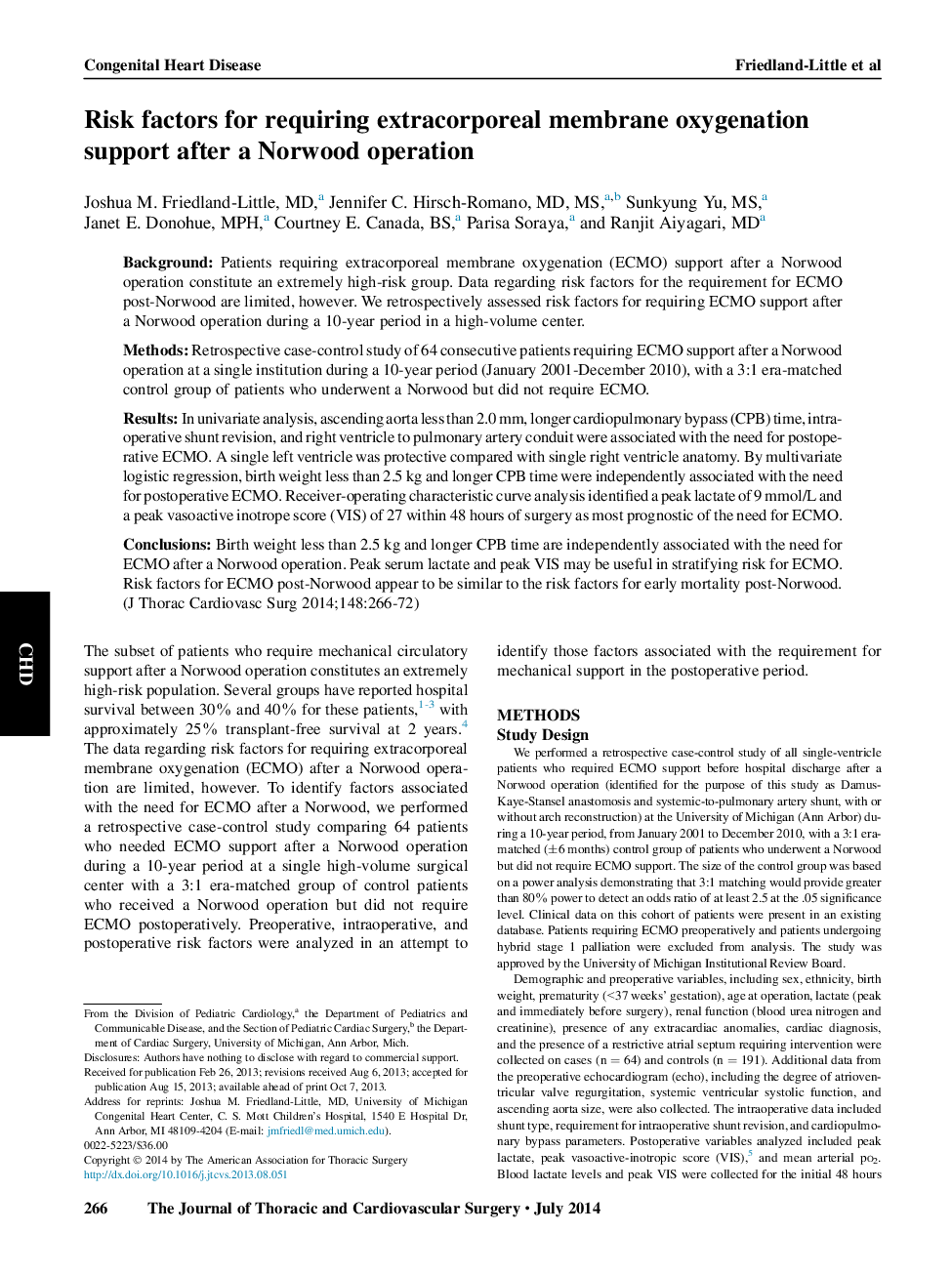| Article ID | Journal | Published Year | Pages | File Type |
|---|---|---|---|---|
| 2980776 | The Journal of Thoracic and Cardiovascular Surgery | 2014 | 7 Pages |
BackgroundPatients requiring extracorporeal membrane oxygenation (ECMO) support after a Norwood operation constitute an extremely high-risk group. Data regarding risk factors for the requirement for ECMO post-Norwood are limited, however. We retrospectively assessed risk factors for requiring ECMO support after a Norwood operation during a 10-year period in a high-volume center.MethodsRetrospective case-control study of 64 consecutive patients requiring ECMO support after a Norwood operation at a single institution during a 10-year period (January 2001-December 2010), with a 3:1 era-matched control group of patients who underwent a Norwood but did not require ECMO.ResultsIn univariate analysis, ascending aorta less than 2.0 mm, longer cardiopulmonary bypass (CPB) time, intraoperative shunt revision, and right ventricle to pulmonary artery conduit were associated with the need for postoperative ECMO. A single left ventricle was protective compared with single right ventricle anatomy. By multivariate logistic regression, birth weight less than 2.5 kg and longer CPB time were independently associated with the need for postoperative ECMO. Receiver-operating characteristic curve analysis identified a peak lactate of 9 mmol/L and a peak vasoactive inotrope score (VIS) of 27 within 48 hours of surgery as most prognostic of the need for ECMO.ConclusionsBirth weight less than 2.5 kg and longer CPB time are independently associated with the need for ECMO after a Norwood operation. Peak serum lactate and peak VIS may be useful in stratifying risk for ECMO. Risk factors for ECMO post-Norwood appear to be similar to the risk factors for early mortality post-Norwood.
